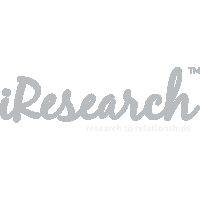In 2019, a question popped up again and again, “Your event sounds great but I’m unable to attend, can I tune in and watch live, or a replay? ”. The team and I began working on a plan that meant we could deliver this in a way that could both engage and educate our community. Our aim was to have a CMA Learning platform live by June 2020, then Covid-19 hit the world, meaning we had to adapt and accelerate our plan. We’re now at the end of May, and already delivered over 100 webinars, with over 2,000 unique registrants. It’s been a superb effort, and I’d like to thank our amazing speakers who stepped forward, and also those that have joined as spectators. Just like our usual CMA events, there’s been great discussion, strong insights, as well as the usual friendly chat.
We’re not done yet…
With more webinars scheduled into the first two weeks of June, we’re continuing to run the CMA Learning platform, and are continuously adding to the schedule. As always, if you have a suggestion for a topic, or would like to present a CMA Learning webinar, then please get in touch, we’d love to hear from you.
CMA Learning Webinar
You’ll now see our ‘Weekly Write-up’ included in the CMA newsletter, with some key takeaways from each webinar, along with a link to replay each session if you missed it.

COVID-19: How to speak to your customers during a crisis
Claire Reynolds, Tank PR
Look out for crisis within crisis
As we all know, these are unprecedented times, and Claire mentioned why companies should also be prepared for multiple crises. Right now we have Covid-19, and soon we’ll be deep into a recession, not to mention any sector-specific crisis that may arise within your industry. Another reason why we should check in with our audience as often as possible, and continuously monitor our messaging.
What NOT to say
We’d like to think that companies already know this, but Claire highlights why it’s vital a company avoids offering health or political advice. Brands should be talking about what they know, and try not to get involved in a topic they don’t specialise in. Also, there’s enough doom and gloom in the world right now, so try to remain positive and offer solutions where possible.
Examples – AirBnB
Claire ran through a number of examples highlighting which brands had communicated well through Covid-19. One of the brands that stood out is AirBnB’s handling of their mass redundancy. As all good comms specialists know, it’s good to get out in front of a story, and they did just that. It was placed on the AirBnB newsroom, and Brian Chesky (Co-Founder and Owner) announced a job board, asking other companies who were hiring to check out the great people he’s sadly letting go.
Watch Claire’s webinar here (replay)

28 Days Later: A month to save the advertising industry
Cameron Sharpe and Tom Lawrence, Progressive Content
Impressions up 20% globally
Cameron and Tom spoke about the increase in eyeballs on screens, and how, thanks to working from home and not being able to go out much, internet usage is up massively. But what does this mean for our content, and is there now too much, what’s good and what works?
Display Ads: The changes to data capture and insight
It was really interesting to hear Cam and Tom talk about the paywall model, and how publishers have used this, and how there’s a possibility of this coming to an end soon. With Apple and Google announcing the removal of more cookies and third-party data collectors, does this mean we’ll have less ads? Cam thinks not, he believes this will provide the likes of Apple and Google with more power, and the ability to harness the data for themselves. Whether they choose to use that data to increase their revenue, or pass on to their partners, we’ll have to wait and see.
Watch Cam and Tom’s webinar here (replay)

The Culture Connection: How great brands are built from the inside out
Simon Bates, Touchpaper Marketing
Examples of why we should be creating a strong work culture
Simon showed some great examples of companies with strong culture from the inside. One of the examples was about Zoom and its CEO. Nobody could have seen the rise of Zoom due to Covid-19, and as we began using the software, it appeared to have a few security issues. Although still not 100% safe, the CEO dropped everything and made sure that all staff were working on getting this problem sorted. He changed the vision for the company in a short period of time. Through this, staff would feel engaged and happy to have a leader like this. On the other hand,
EVP – Creating a strong relationship between brand and culture
How a company thinks and acts on the inside can lead to how it’s perceived on the outside. Simon spoke about brand being something owned by the marketing department, whereas HR lay claim to running the companies culture. If we want to attract and retain top talent, we need to ensure that brand and culture are seen as two sides of the same coin.






